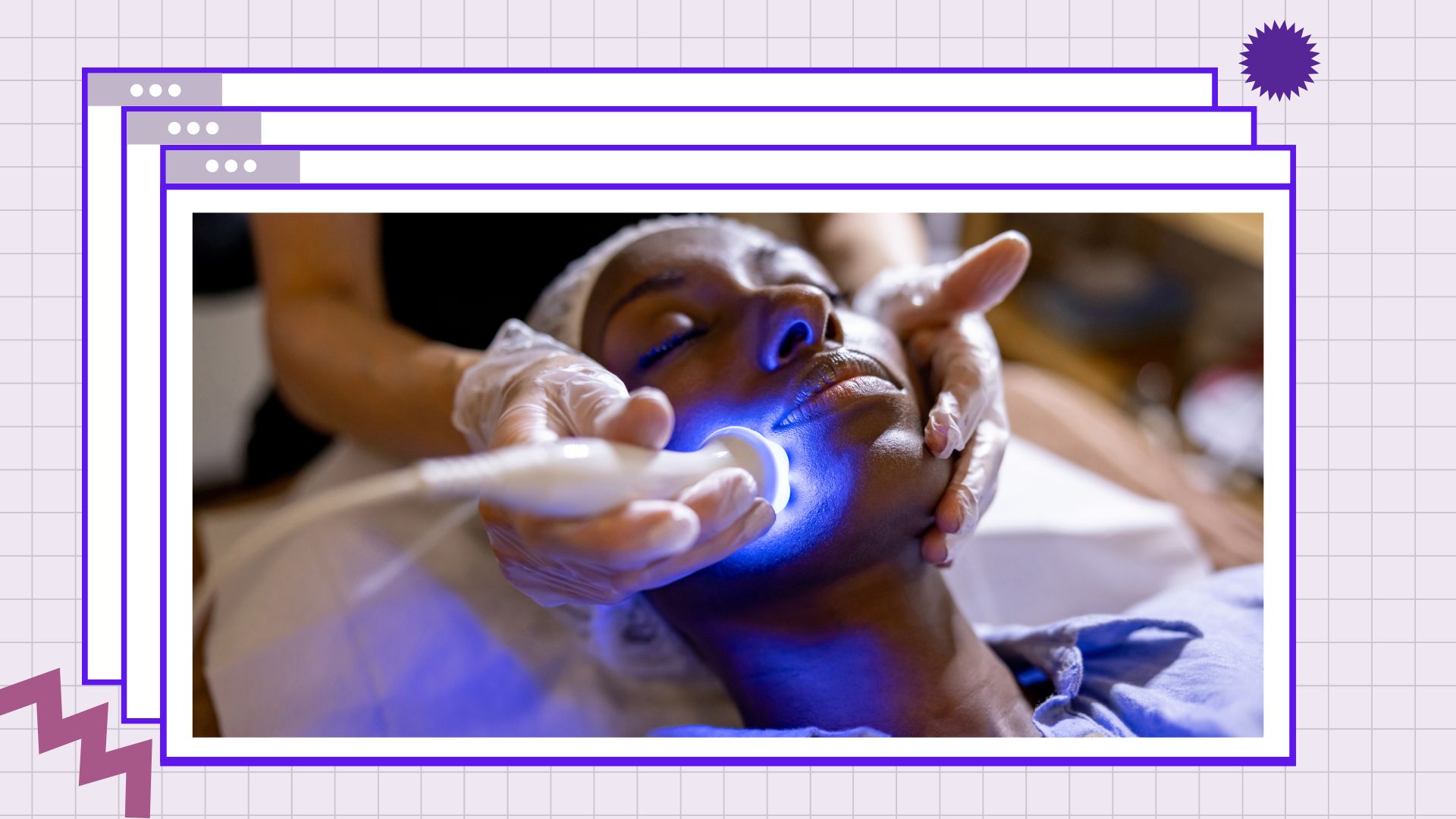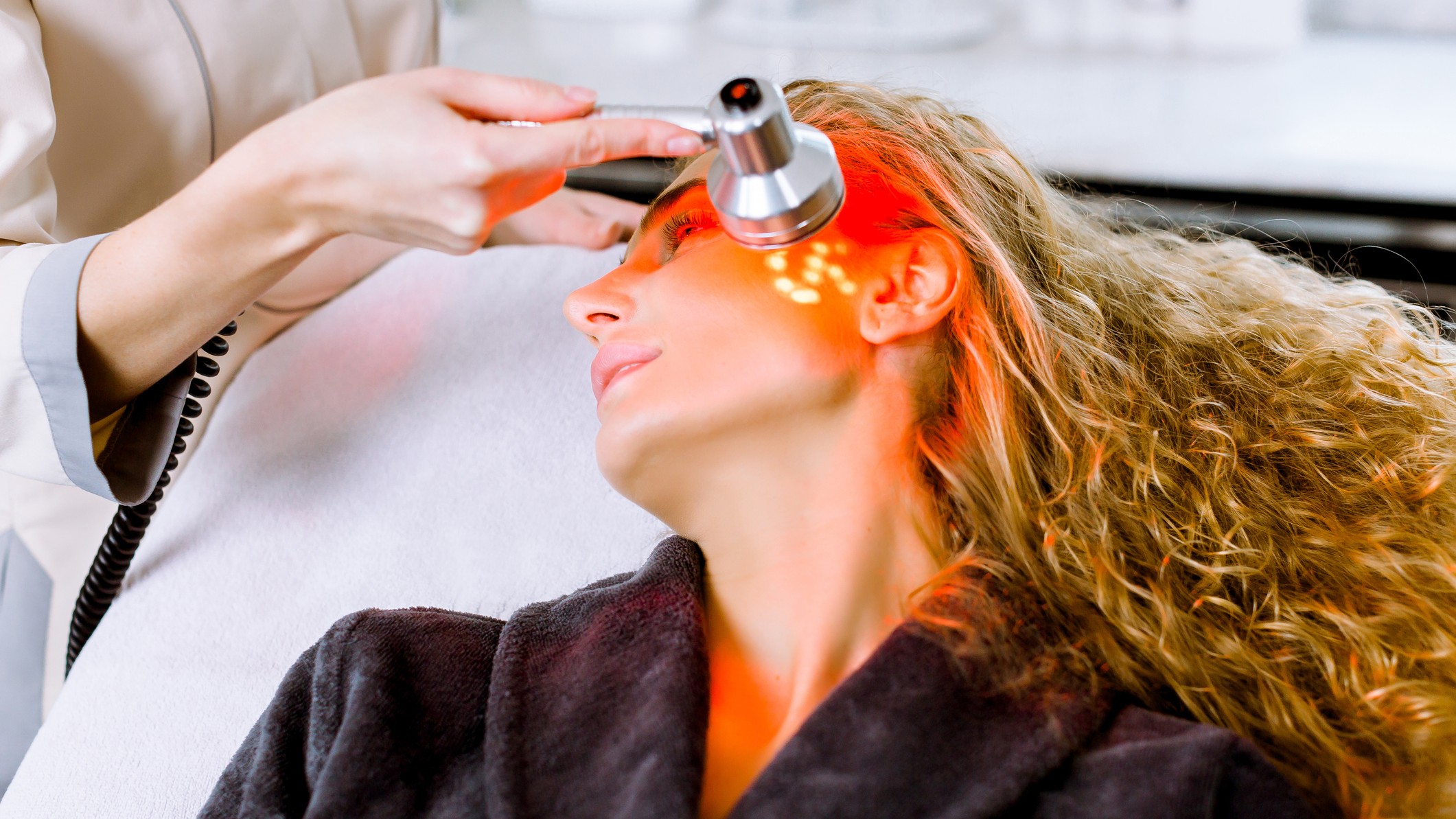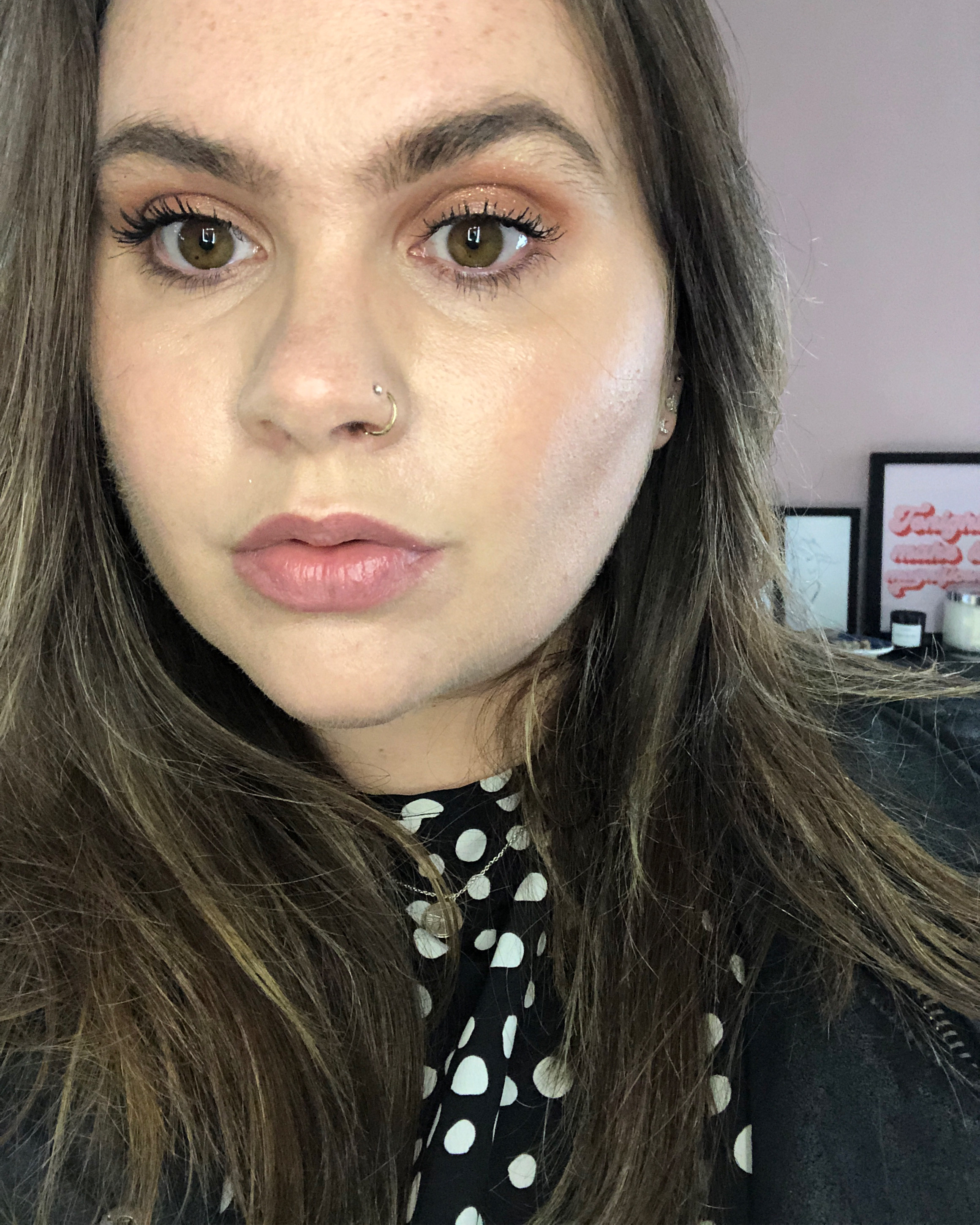LED light therapy: everything you need to know about the popular skincare treatment
LED light therapy can be used to target an array of skin concerns...


LED light therapy is a treatment that is becoming increasingly prominent in effective at-home skincare routines. With a whole range of effective at-home treatments now available, you might have seen friends exploring it, celebs swearing by it on Instagram, or even noticed your favorite TV characters donning the futuristic-looking masks.
It’s a treatment that's available both professionally in clinic and at-home via a range of different gadgets and devices and can help to improve the efficiency of your best vitamin C serums for a brighter look and can even help to get the most our of your best hyaluronic acid serums by boosting the collagen underneath the skin. It's also really popular among those looking to tackle acne, as certain LED lights work to kill bacteria on the skin.
But what exactly is LED light therapy, how does it work, what sort of issues does it target and who is it suitable for? Our expert contributing beauty editor has done the hard work for you and have spoken to the professionals to find out everything you need to know.
Meet the experts on LED light therapy
- Dr Sophie Shotter is Medical Director and Founder of Illuminate Skin Clinics. She is an experienced, multi award-winning aesthetic doctor, with over a decade of medical experience.
- Laura Ferguson and Hannah Measures are founders of The Light Salon and have been working with LED light therapy since 2006.
What is LED light therapy?
“LED stands for Light Emitting Diode, and the benefits are all a result of the light, which emits therapeutic wavelengths of light energy into the skin—encouraging the cells to behave more youthfully, stimulating circulation and the production of everything from elastin to collagen,” says Laura Ferguson and Hannah Measures, founders of The Light Salon.
And there's no need to panic—it requires no needles or procedures. “It’s an entirely non-invasive skin treatment, and is well backed by strong clinical research to show excellent results for skin rejuvenation and acne control” explains Dr Sophie Shotter, founder of Illuminate Skin Clinics.
What are the main benefits of LED light therapy?
LED light therapy is almost a one-stop-shop in helping to address a multitude of different skin concerns that anybody can benefit from.
Ferguson explained, "Just like water, diet, exercise and sleep, light is vital for our cells to thrive and a core ingredient of a balanced lifestyle.

"It’s able to stimulate collagen and elastin production to rejuvenate the complexion, it can penetrate deep into the body, reaching muscles, nerves and bone, increasing blood flow and it targets inflammation whilst supporting cellular regrowth and regeneration to help reduce pain and heal injuries.”
Is LED light therapy suitable for all skin types and skin tones?
The short answer is yes, and that’s the great thing about it—LED light therapy can be a great skincare option for most people. “I actually can’t think of a skin type for whom LED isn’t a useful treatment,” says Dr Shotter, “It’s effective yet very gentle, and it’s especially great for people who are looking to calm irritated or post-procedure skin, those who want anti-aging benefits (outside of using the best retinol serums), and those with acne in particular."
Measures agreed, explaining, "Anyone and everyone can benefit from it, and it has the added benefit of being safe for all skin types, ages, and concerns.
"As well as really helping redness and blemished, acne-prone skin, LED improves skin suffering from rosacea and eczema, leading to smoother, softer, and brighter skin."
What do the different LED light therapy colors do?
While it’s red, near-infrared and blue light that have the most clinical research and backing, there are a few other coloured LED lights that can have a positive impact on skin appearance and skin health. Here’s a brief rundown from Dr Shotter on what each one is good for:
- Red light is known for its anti-ageing benefits, combating wrinkles and increasing collagen production
- Blue light penetrates the skin and kills c.acnes bacteria that live within it, making it a go-to choice for acne sufferers
- Near Infrared light amplifies results by penetrating more deeply, promoting healing as well as giving anti-ageing benefits
- Other colors have great benefits too. Some devices offer lights such as green for evening out pigmentation, yellow to reduce inflammation and rosacea, purple for cell regeneration and orange for more radiant skin with added glow. These wavelengths have less evidence, but are becoming much more widely used.
How long does it take to see results from LED light therapy?
Skincare fans will be pleased to know that the results are both instant and long-term. "Because LED light therapy works on a cellular level, you’ll leave a professional treatment looking glowing—and that glow will become more pronounced with each treatment," says Measures.
"Think of it a bit like a workout or spin class: going once is better than not going at all, but if you make an effort to stick to regular sessions, you’ll get great cumulative benefits."

Dr Shotter concurs, adding that the best results come from a course of multiple treatments. "Weekly treatments are perfect for most skin types during an initial course, with maintenance treatments thereafter," she says.
"Results will wane if you don’t maintain them, and while you might not notice straight away, after a few months it’ll be more visible, and that’s because skin will continue to break down collagen and bacterial levels will start to rise again."
Professional LED light therapy vs. at home LED light therapy
While the array of at-home devices is ever-increasing, most experts agree that they can rarely deliver the exact results of professional treatments, especially with the same amount of usage.
"There are some excellent home use devices that are backed by research, but they require consistent daily use," says Dr Shotter. "In comparison, in-clinic treatments are usually anywhere from twice a week to twice a month depending on the individual treatment plan. My advice is to use an at-home device as an add on, rather than a replacement."
Hannah and Laura from The Light Salon have launched their own at-home device, The Boost LED Mask ($495/£395), which uses the same clinically-proven wavelengths as professional machines, but has been engineered for at-home use.
"Our clients wanted to use something in between their treatments to maintain their glow at home. If you use the mask three times a week over a four week period, it delivers the equivalent cumulative dose of light as having one professional treatment every week for four weeks."
However, if you'd prefer to opt for at-home LED light therapy, there are a number of gadgets to choose from—from LED masks, like the Currentbody Light Therapy mask or the Dr Dennis Gross Spectralite Faceware, to handheld devices that can spot treat like the Therabody Theraface Pro or Foreo UFO.
Can I use LED light on my face everyday?
The usage guidelines for each device are different, so while some gadgets are designed to use everyday, some recommend less frequent use.
It's important to read the usage instructions fully of whichever device you're using in order to ensure safe and responsible usage.
Lucy Partington has been a beauty journalist for eight years, writing for titles including Stylist and Cosmopolitan. She’s a true skincare nerd who’s on a lifelong quest for a glowing complexion and loves nothing more than learning about new ingredients and products. She’s obsessed with having perfect eyebrows and collecting eyeshadow palettes she’ll probably never use.
